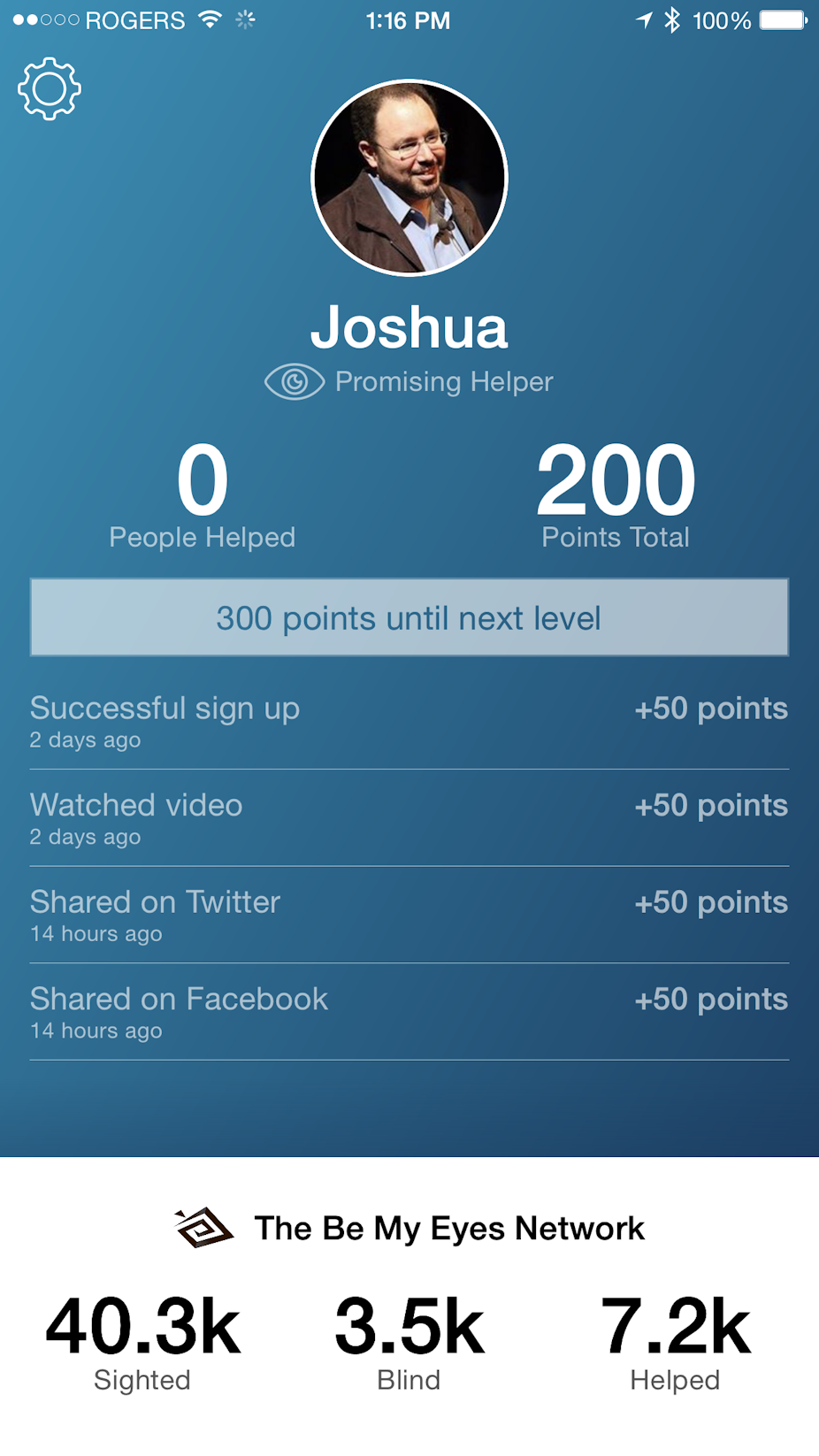Be My Eyes is a clever app created by Hans Jørgen Wiberg, a Danish craftsperson who is also visually impaired. I could explain it but you should really watch this video.
The design is quite clever. When asking people to contribute something voluntarily, it is always best to make people feel good about giving a little rather than guilty about not doing everything. That is precisely what occurs here.
Upon seeing the video I downloaded the app and signed up right away. How could I not? I then waited to see if anyone needed help.
A couple of days later, my services still haven’t been required. But perhaps that is because 40,000 people are there to help the approximately 3,500 blind people on the service. Nonetheless, I was feeling good about the entire thing.
During our family dinner I showed my family the video and suggested they sign up too. Everyone leapt to do so except for my wife. I was curious.
“Why don’t you want to sign up? It seems like a no brainer.”
“Have you listened to This American Life this week?”
“No, I’m behind.”
“Listen to it and you may not see this as so obvious.”
“Are you meaning to tell me that there is something in This American Life, this week, that would cause me to not be available to help a blind person?”
“Yep.”
Since my wife, between the two of us, is the nicer one, I was curious. So I listened to This American Life. The episode was entitled “Batman” and it was about how expectations can really impact what people do. That isn’t that surprising. What is surprising is how much. If you don’t want a spoiler, pop over and listen to the podcast now.
The episode was about Daniel Kish, a blind man who has been so since he was a baby and lost his eyes to cancer. His parents decided to bring him up pretty much as if he were sighted and to let him, basically, roam free. Kish, it turned out had quite an independence streak. He walked himself to school and learned to ride a bike all by using a form of echo location. As it turns out, that stimulates the visual cortex and so, in many respects, Daniel can see.
So how does this relate to Be My Eyes? Well, the episode suggests that many blind people are capable – especially if they start young – in being as independent as Daniel. They are held back in life because people expect them to be dependent and this reinforces fear in them. It is easy to see how that could occur. After all, it was a plot of Happy Days when Fonzie temporarily lost his eyesight. (I have my own superpowers including recollection of 1970s TV plots).
My wife wondered if having a Be My Eyes service would just reinforce the same thing. The idea being that Be My Eyes might provide someone with help when perhaps they may be able to do without. Suffice it to say, she has a point.
But it is also the case that while it was easy for This American Life to put the agenda of expectations and independence on the table, it is harder to know how widespread that level of capability is. It’s worth noting that the Danish Blind Society backs Be My Eyes. At the same time, there’s technology coming down the track that uses sensory substitution to help blind and partially sighted people to “see” with sound. That technology would, of course, only extend the natural capabilities of blind people and foster a push towards independence.
I am still signed on to the Be My Eyes and look forward to helping out if it is asked of me.
But I certainly have to admit that this little episode has challenged my notion of precisely what a “no brainer” innovation might be.

